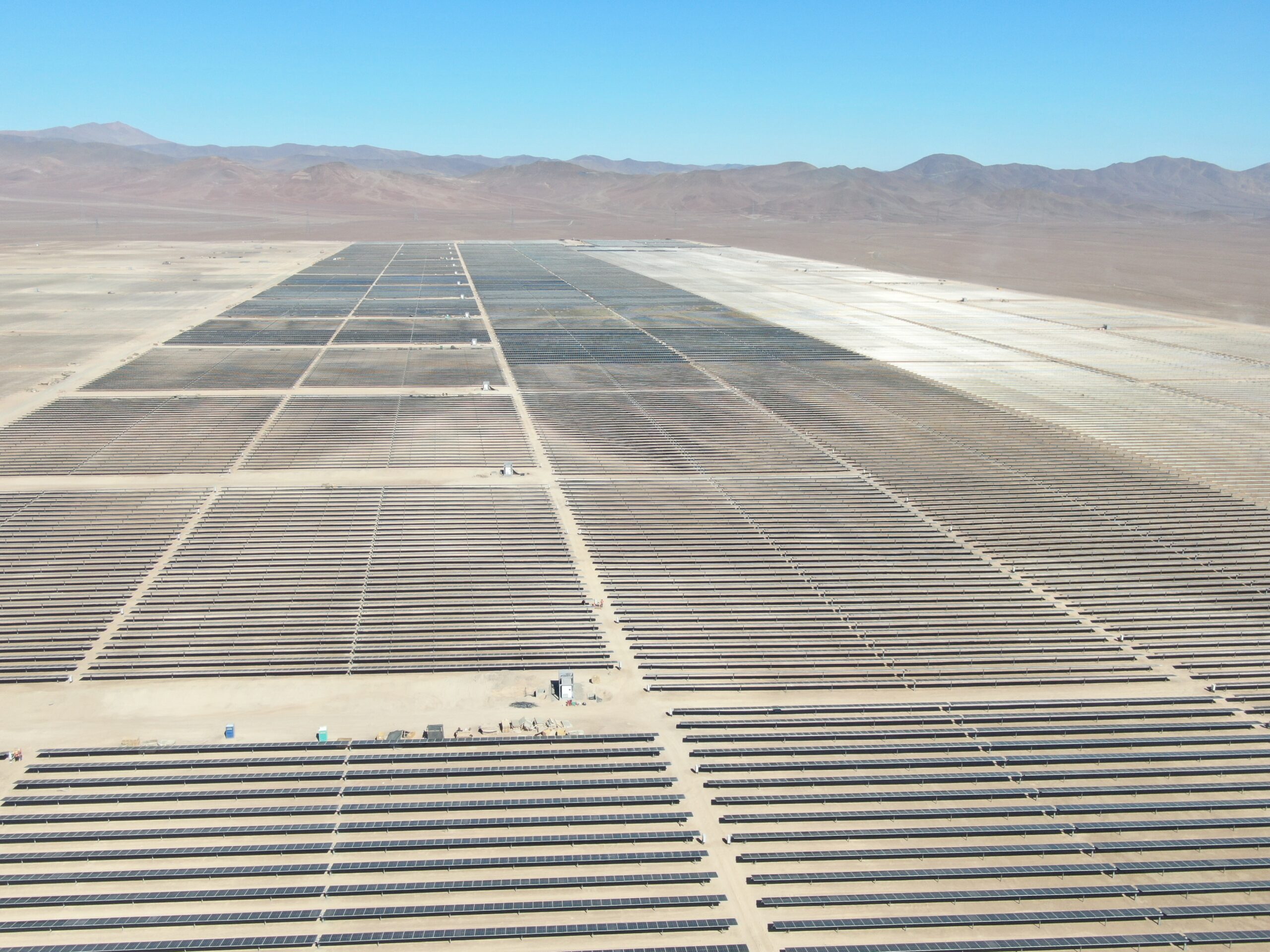
Mimicking renewable policies is the highest form of flattery
While not traditionally held up as a pinnacle of renewable energy development, Chile has quietly become a leader in South America for developing environmental policy and attracting renewable investment. With the amount of solar and wind energy eclipsing coal for the first time in its history and a populace that is perhaps the most environmentally friendly in the world, Chile has set lofty renewable energy goals and is poised to meet them.
Unfortunately, Chile’s neighbor to the east cannot say the same. Argentina’s reliance on oil and natural gas, its outdated electric grid, and its undesirable investment climate have resulted in a sluggish transition to green energy and a continued dependence on carbon-heavy energy sources. The two countries share similar degrees of renewable potential due to their landscape, but one has succeeded and the other seems unable to move forward. Argentina must look to Chile’s last twenty years for guidance, and to its own last twenty years as a warning.
Everything, at least in the renewable energy world, seems to favor Chile. In a study about public opinion on climate change, 93% of respondents in Chile reported that they were either “somewhat worried” or “very worried” about climate change. Similarly, 80% of respondents said that climate change would hurt future generations “a great deal.” These were the second highest rates for both questions among the 192 countries and territories. Strong public opinion is compounded by the success that Chile has had in solar and wind development. From August 2021 to September 2022, Chile produced a higher share of its electricity from solar and wind than coal, marking the first time in its history. Public opinion and success of renewables have encouraged the government to make ever stronger commitments. This includes a pledge to be carbon neutral by 2050 at the latest, and power generation companies have agreed to close thermal power plants by 2040.
Chile has many of the same resources as Argentina. Atacama and Antofagasta, home to many of the largest solar PV plants in Chile, are located in the arid northern region. This is a similar climate to the north of Argentina, yet Chile has so far seen a much more appropriate use of its resources. The wind energy potential in Chile and Argentina are similar, but once again Chile has taken advantage of its resources, while Argentina has not. Wind energy accounted for only 3.5% of electricity generation in Argentina, despite 300 GW of potential and excellent wind speeds in the south. Chile, on the other hand, boasts 9% of its power consumption from wind energy.
When asked about the roadblocks to further development of Argentinian renewables, reporters and industry leaders in the country most often mentioned inadequate grid infrastructure associated with the length of the country. Proponents struggle on how best to transport energy created in the solar and wind farms in the far north and south of the country to population centers in the center. However, Chile has a fully privatized energy generation and distribution network, stemming from the strong economic growth of the last 20 years, which has provided an ideal investment atmosphere. By contrast, Argentina’s economic instability deters outside investment, as do the extraordinary levels of inflation. Argentina was also blessed, or in this case, cursed, with massive reserves of both oil and natural gas. In 2022, Argentina exported more oil than ever before, thanks in large part to new excavations of the Vaca Muerta deposits. Unfortunately, Argentina continues to heavily subsidize its oil industry. In fact, 2020 saw Argentina invest 90 times more capital in fossil fuel programs than in renewable energy initiatives. This effectively hamstrings Argentina’s fledgling renewables industries, as they are now not only competing with oil and natural gas, but also with a government that is more dedicated to promoting the interests of these carbon energies.
It would be difficult to find two neighboring countries with such different approaches to renewable energy. While both are capable of providing vast amounts of both solar and wind power, Chile has a population that is highly supportive, a government that is championing renewable policies, and an economy that is attracting investment from global sources. Argentina, by contrast, continues to rely on its vast supply of oil and natural gas to boost an economy that is suffering from severe inflation. As far as renewables are concerned, Chile is on the right side of history.
Have a tip for CleanTechnica? Want to advertise? Want to suggest a guest for our CleanTech Talk podcast? Contact us here.
Latest CleanTechnica TV Video
[embedded content]I don't like paywalls. You don't like paywalls. Who likes paywalls? Here at CleanTechnica, we implemented a limited paywall for a while, but it always felt wrong — and it was always tough to decide what we should put behind there. In theory, your most exclusive and best content goes behind a paywall. But then fewer people read it!! So, we've decided to completely nix paywalls here at CleanTechnica. But...
Thank you!
Advertisement
CleanTechnica uses affiliate links. See our policy here.
- SEO Powered Content & PR Distribution. Get Amplified Today.
- PlatoData.Network Vertical Generative Ai. Empower Yourself. Access Here.
- PlatoAiStream. Web3 Intelligence. Knowledge Amplified. Access Here.
- PlatoESG. Carbon, CleanTech, Energy, Environment, Solar, Waste Management. Access Here.
- PlatoHealth. Biotech and Clinical Trials Intelligence. Access Here.
- Source: https://cleantechnica.com/2024/01/26/argentina-chile-a-tale-of-two-countries/
- :has
- :is
- :not
- $UP
- 15%
- 20
- 20 years
- 2020
- 2021
- 2022
- 2050
- 300
- 36
- 90
- a
- About
- accounted
- ADvantage
- Advertise
- Affiliate
- again
- agreed
- also
- always
- america
- among
- amount
- amounts
- an
- and
- approaches
- appropriate
- ARE
- Argentina
- AS
- associated
- At
- Atmosphere
- attracting
- AUGUST
- BE
- become
- before
- behind
- BEST
- Bit
- blessed
- boasts
- boost
- both
- but
- by
- cannot
- capable
- capital
- carbon
- case
- Center
- Centers
- championing
- change
- Chile
- chip
- cleantech
- Cleantech Talk
- Climate
- Climate change
- Close
- Coal
- commitments
- Companies
- competing
- completely
- compounded
- concerned
- consumption
- content
- continued
- continues
- contrast
- countries
- country
- created
- deal
- decide
- decided
- dedicated
- dependence
- deposits
- Despite
- developing
- Development
- different
- difficult
- distribution
- do
- don
- due
- East
- Economic
- Economic growth
- economy
- effectively
- either
- Electric
- electricity
- embedded
- encouraged
- energy
- environmental
- Environmental policy
- environmentally
- environmentally friendly
- EVER
- excellent
- Exclusive
- extraordinary
- fact
- far
- Farms
- favor
- felt
- fewer
- Find
- First
- first time
- For
- form
- Forward
- fossil
- Fossil fuel
- friendly
- from
- Fuel
- fully
- further
- further development
- future
- GAS
- generation
- generations
- Global
- Goals
- Goes
- Government
- great
- Green
- green energy
- Grid
- Growth
- Guest
- guidance
- had
- hand
- Have
- heavily
- Held
- help
- here
- higher
- highest
- highly
- history
- Home
- How
- However
- HTTPS
- Hurt
- ideal
- if
- implemented
- in
- includes
- industries
- industry
- inflation
- Infrastructure
- initiatives
- instability
- interests
- Invest
- investment
- IT
- ITS
- jpg
- landscape
- large
- largest
- Last
- latest
- leader
- leaders
- least
- Length
- levels
- like
- likes
- Limited
- links
- located
- lofty
- Look
- make
- many
- marking
- massive
- Media
- Meet
- mentioned
- more
- most
- move
- move forward
- much
- must
- Natural
- Natural Gas
- Need
- neighboring
- network
- Neutral
- New
- news
- North
- now
- of
- often
- Oil
- on
- once
- ONE
- only
- Opinion
- or
- Other
- our
- outside
- own
- part
- People
- perhaps
- pinnacle
- plants
- plato
- Plato Data Intelligence
- PlatoData
- player
- Pledge
- podcast
- poised
- policies
- policy
- population
- potential
- power
- power plants
- Produced
- Programs
- promoting
- provided
- providing
- public
- public opinion
- publish
- put
- Questions
- quietly
- Rates
- Read
- Reader
- region
- reliance
- rely
- Renewable
- renewable energy
- Renewables
- Reported
- reserves
- Resources
- respondents
- resulted
- right
- roadblocks
- Said
- same
- saw
- say
- Second
- see
- seems
- seen
- September
- set
- severe
- Share
- should
- side
- similar
- Similarly
- sluggish
- So
- so Far
- solar
- Sources
- South
- South America
- speeds
- Stories
- strong
- stronger
- Struggle
- Study
- success
- such
- suffering
- suggest
- supply
- support
- supportive
- T
- taken
- tale
- Talk
- team
- territories
- than
- thanks
- that
- The
- the world
- their
- Them
- then
- theory
- There.
- thermal
- These
- they
- this
- time
- times
- tip
- to
- tough
- traditionally
- transition
- transport
- tv
- twenty
- two
- unable
- unfortunately
- Updates
- us
- use
- uses
- Vast
- Ve
- Video
- want
- warning
- was
- we
- were
- What
- which
- while
- WHO
- wind
- wind energy
- wind farms
- wind power
- with
- world
- would
- write
- Wrong
- years
- yet
- you
- Your
- youtube
- zephyrnet









